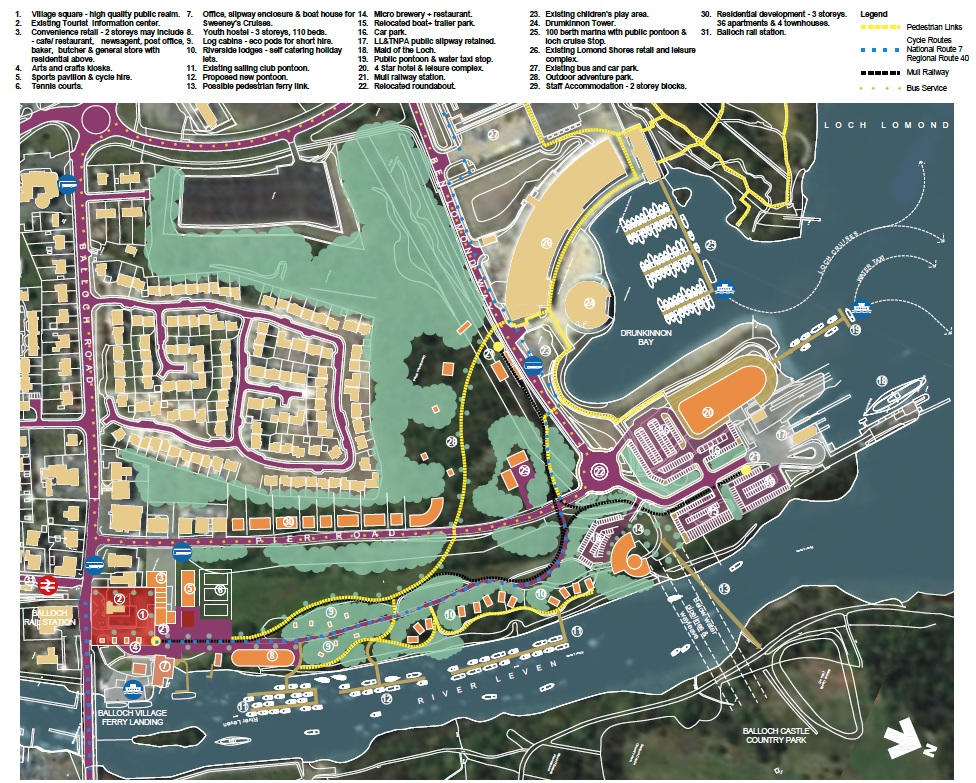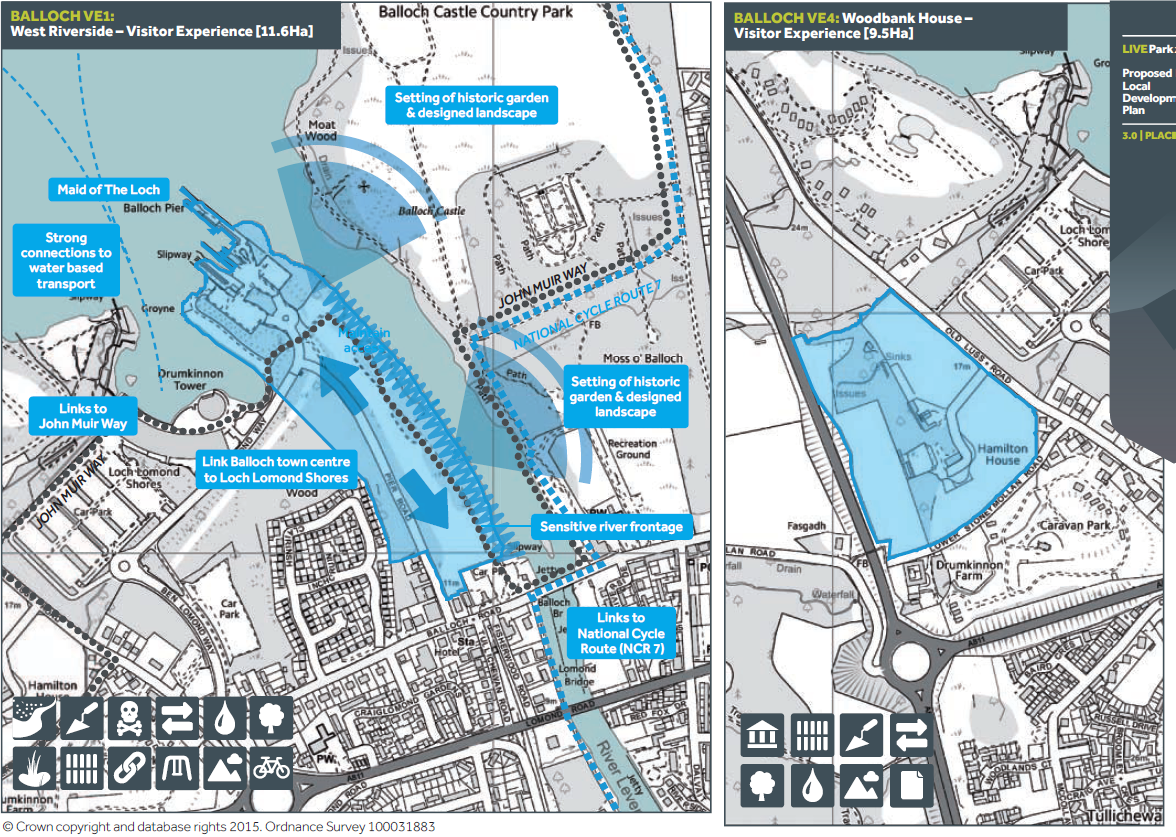
The Observer on Sunday ran a full page article by Kevin McKenna on Flamingo Land’s appointment as preferred developer for the west riverside side in Balloch (see here and here). I normally enjoy reading Kevin McKenna but did wonder if this is the same Kevin McKenna who had previously lambasted the development in an entertaining blog post entitled “Keep Flamingo Land away from Loch Lomond – we don’t want any old bouncy castle experience in our back garden”! (see here) Having played a small part in stoking up the anger that resulted in over 30,000 people signing a petition to stop the development, Kevin McKenna asks in the Observer article if the anger is justified? While the article questions that opposition McKenna’s conclusion is “In the final analysis, Loch Lomond’s worldwide appeal will probably ensure that the development, when it happens, is as pristine, sustainable and sympathetic to the surrounding environment as anything containing “glamping pods” ever could be.”
I wish I could be so confident. I think there are three major issues about the proposed development.
The first is the secrecy that has surrounded the appointment of a preferred developer and what appears to have been the deliberate exclusion of the local community and other interests from discussions about whether this was the best means to develop the site (see previous posts). This is wrong, contrary to Scottish Government Policy but unfortunately is the way the Loch Lomond and Trossachs National Park Authority currently operates. Scottish Enterprise and the LLTNPA had every opportunity to consult through the local community planning event held earlier this year which considered plans for the area. They didn’t and should be forced to explain why.
The second is Flamingo Land’s fitness to develop land in the National Park. Flamingo Land’s experience is in running and developing theme parks not in protecting the natural environment and landscape. The current destruction which is taking place under Natural Retreats at Cairngorm is a warning of what can happen when Enterprise Companies appoint a large developer whose interest is not primarily in the environment but in making money. In my view the many local businesses operating around Loch Lomond who depend on protection of the landscape natural environment for their living would be a far safer bet to develop the site.
The third issue is the cost of improving the west Riverside site and I believe explains what is going on and will almost certain result in a development that compromises the National Park. The west Riverside side covers former railway sidings, disused sand and gravel pits, a former silk dye works and some of the land has been reclaimed with former ash waste. Some of this is definitely contaminated and all of it may be. This will not be cheap to fix. There will be other costs of clean-up besides contamination – Scottish Enterprise spent £40k after it acquired the site simply lifting sunken boats out the river. The river bank is vulnerable to flooding, again more costs. On top of that a walkway along the river will now have to be paid for a good thing and a positive thing that did come out of the community planning event. The total costs are likely to be significant, well beyond the means of any local business, hence the appointment by Scottish Enterprise of a single developer for the entire site.
If Flamingo Land have to pay for all of this they will need to get their money back somehow and they are not going to do this through a few glamping pods. The pressure will be on for a more intensive development, not the type of low key developments outlined in the press release, and for the developments to raise as much income as possible, with all that implies for other local businesses. The way this is likely to work is that Flamingo Land will come up with an initial plan, which looks fine and gets planning consent, but then during the development processes unforeseen costs or other factors then lead to a dilution of the planning conditions.
The LLTNPA Park has quite a track record on diluting planning requirements (as in Glen Falloch where my next post will be on all the hill tracks that were supposed to be removed after the creation of the hydro schemes there). In 2012 the LLTNPA provided a screening opinion which indicated they would reject the outline master plan featured in the graphic at the top of this post. Judging by that plan the funding of site improvements would have been through the sale of new luxury housing along pier road and a large four star hotel on the banks of Loch Lomond. New housing has been ruled out for the site which is earmarked in the latest development plan for “Visitor Experience” (not Economic Development as stated in the Observer).

A large hotel on the lochshore appears to have previously been ruled out through the screening opinion. Without a hotel on the lochshore, which would have a big impact on the landscape, and the housing its very difficult to see how the cost of improving the west Riverside site can be funded. Scottish Enterprise must have a good idea of the potential costs of putting the site right and I think they need to explain how they believe the developer will be able to do this while meeting the aims of the National Park.
An alternative way of improving the west Riverside side which would not have resulted in any inappropriate development pressures would have been for the public sector to pay for the decontamination of the land and the walkway (accepting that the businesses that caused the damage in the first place have long gone). That would then enable local businesses to have come up with proposals that were compatible with the aims of the National Park. Unfortunately austerity, which is a political choice, is driving commercialisation in the National Park and threatening to undermine its aims. The 30,000 are very right to be concerned.
